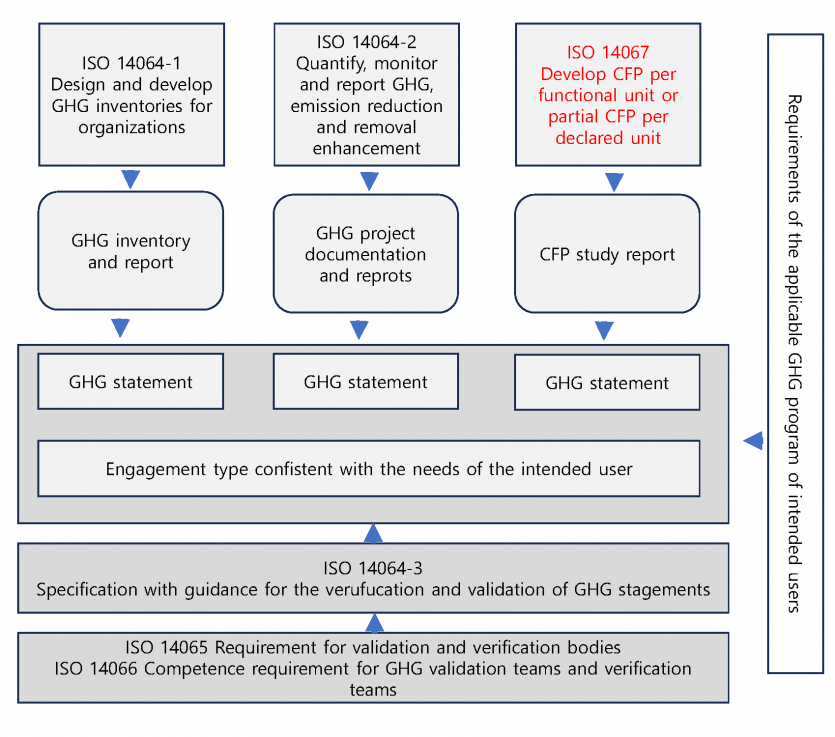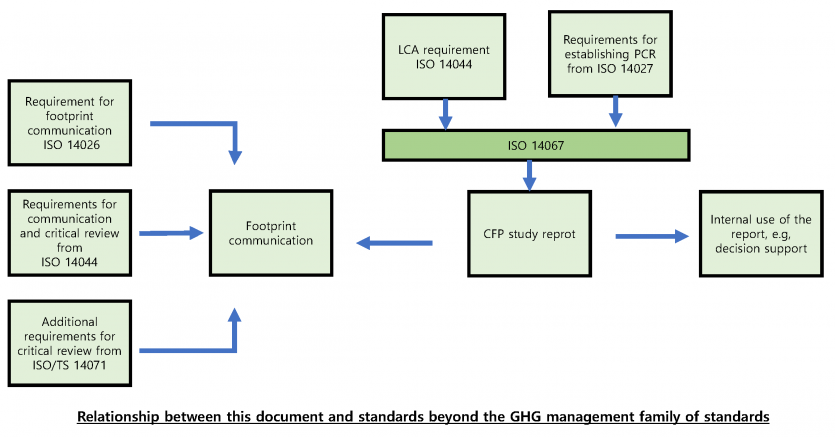ISO 14067:2018 Greenhouse gases
Page Information

Contents
ISO 14067:2018 Greenhouse gases
- Carbon footprint of products - Requirements and guidelines for quantification
A. What is ISO 14067:2018
Due to the recent bizarre effects of climate change, available resources, economic activities, etc. are having a significant impact on humans and the natural world. To counter the threat posed by climate change, the ISO developed the ISO 14060 standard to support scientific knowledge by converting it into a tool that helps deal with climate change.
The ISO 14067:2018 requirements of the ISO 14060 series of standards provide for principles, requirements and guidelines for the quantification and reporting of product carbon footprints (CFPs) in a manner consistent with the international requirements for whole process evaluation (LCA). Quantification of product carbon footprints (CFPs) will be understood and supported to increase and reduce greenhouse gas emissions throughout the product.
The standards detail principles, requirements and guidelines for quantifying CFPs, i.e., products and services, based on greenhouse gas emissions and elimination over the course of the process. They also provide requirements for partial CFP quantification.
** LCA / Life cycle assessment
compilation and evaluation of the inputs, outputs and the potential environmental impacts of a product system throughout its life cycle
**CFP / Carbon footprint of product
sum of GHG emissions and GHG removals in a product system, expressed as CO2equivalents and based on a life cycle assessment using the single impact category of climate change
B. The importance of ISO 14067:2018
1. Depending on their requirements, CFP quantification can be reviewed clearly and consistently to provide to organizations, governments, industries, service providers, communities, and other stakeholders for increased reliability.
2. You can avoid the burden from one stage of the entire product process to another or from one stage to another.
3. It can promote CFP performance tracking in reducing greenhouse gas emissions.
4. Potential opportunities for increasing greenhouse gas emissions and reducing emissions can be identified to provide better CFP understanding.
C. Standards related to ISO 14060 & 14067
The following shows the associations between the ISO 14060 Greenhouse Gas Series standards. The ISO 14060 standards provide clarity and consistency for quantifying, monitoring, reporting, and feasibility assessment or verification of greenhouse gas emissions and emissions to support sustainable development through a low-carbon economy.

*The Greenhouse Gas Statement in this standard is CFP or partial CFP.
The following shows the annual performance between ISO 14067 and standards other than the Greenhouse Gas Management Series standard. CFP prepared in accordance with this standard contributes to the goals of greenhouse gas related policies and systems, which are described in Requirement Annex A.
D. ISO 14067:2018 Requirements
1. Scope
2. Normative references
3. Terms, definitions and abbreviated terms
4. Application
5. Principles
6. Methodology for quantification of the CFP and partial CFP
7. CFP study report
8. Critical review
Annex A Limitations of the CFP
Annex B Comparison based on the CFP of different product.
Annex C The CFP systematic approach
Annex D CFP Possible procedures for the treatment of recycling in CFP studies
Annex E Guidance on quantifying GHG emissions and removals for agricultural and land use to product
- PreviousISO 21448 24.04.01
- NextCertificate Items & Method of Certificate Verification 24.01.29
Comment list
There are no registered comments.

